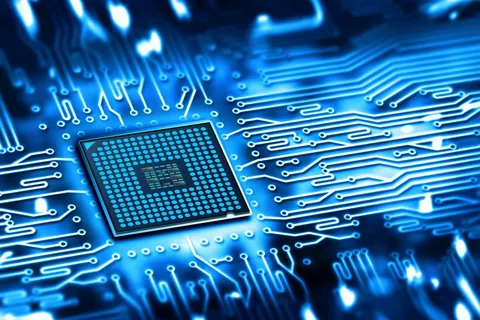In today’s digital world, the importance of capturing analog data with precision cannot be overstated. From images captured by cameras to temperature readings and sound recordings, converting this analog data into digital form accurately is crucial for various applications. Imagine an autonomous vehicle that needs to process real-time data from its surroundings to make split-second decisions – this requires rapid and precise data conversion with minimal energy consumption.
A recent paper titled “Programming memristor arrays with arbitrarily high precision for analog computing” published in the journal Science introduces a groundbreaking development in analog computing. Memristors, tiny circuit components known for their efficient data storage and processing capabilities, have been the focus of research by Professor J. Joshua Yang and his team at the USC Viterbi School of Engineering. Building upon their previous work on enhancing memristor precision, the researchers have now successfully designed a novel circuit architecture that further elevates the precision level achievable with memristors.
The new architecture not only offers enhanced precision but also leverages the energy-saving and high-speed benefits characteristic of analog computing. This breakthrough has the potential to expand the applications of analog computing beyond its conventional uses, such as in neural networks. Additionally, the innovation is not limited to memristors alone, as it can be adapted for other memory technologies like magnetic and phase change memories.
Typically, programming analog devices to a specific target value with precision presents a significant challenge. However, Yang’s team has developed a sophisticated circuit architecture paired with advanced algorithms to address this issue effectively. By enabling precise programming of analog devices, this innovation makes analog computing a more appealing option for a wide range of applications.
Yang emphasizes that the new architecture offers both efficiency and speed comparable to digital systems while maintaining the accuracy required for analog computing. This improvement is particularly valuable for training neural networks, a crucial component in the advancement of artificial intelligence and machine learning. Traditionally, such tasks have been carried out using expensive digital systems, making the shift towards analog computing a significant advancement in the field.
Beyond AI and ML, the enhanced precision in analog computing opens doors to new applications such as scientific computing for tasks like weather forecasting. With its potential to revolutionize data processing techniques, this new analog chip architecture marks a significant step towards achieving higher precision and efficiency in computing systems.
*Note:
1. Source: Coherent Market Insights, Public sources, Desk research
2. We have leveraged AI tools to mine information and compile it



